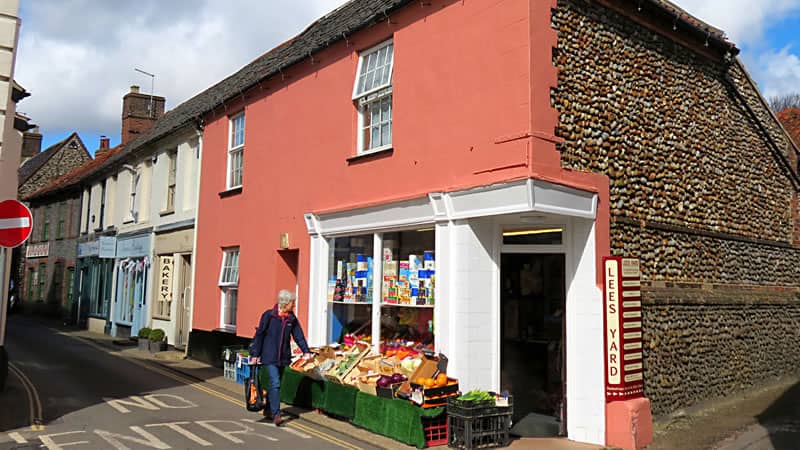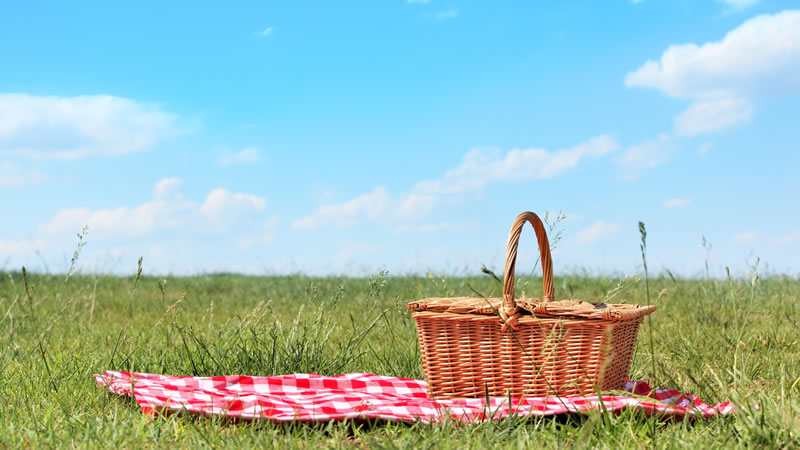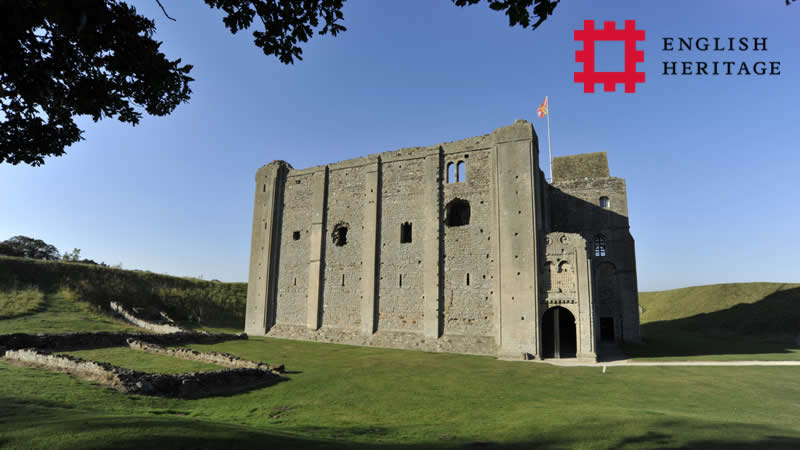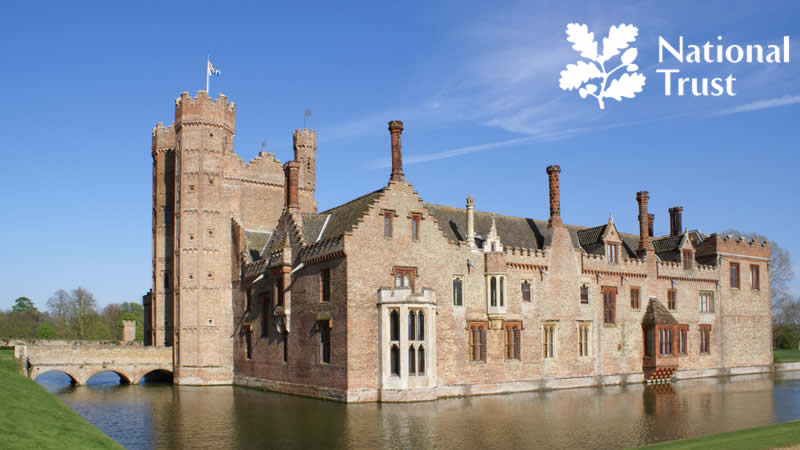A timeline of Norwich
Published date: March 2019

Read about some of Norwich’s most important dates in history, including when Norwich Castle, Norwich Cathedral and other historic and important buildings were built. When the Black Death reached Norwich, Kett’s Rebellion and when devasting fires hit the city. See important dates in history for Jarrold Department Store, Colman’s Mustard, The University of East Anglia, Norwich International Airport and Norwich City Football Club.
-
10th Century
Norwich is a small Anglo-Saxon settlement, north of the river Wensum with its own mint. During the 10th Century Norwich grew rapidly spreading to the south bank of the river
-
1004
The Danes burn Norwich - with the buildings made of wood and thatch, this was easy. However, Norwich was re-built and soon began to flourish
-
1067 onwards
Normans start work on Norwich castle
-
1086
At the time of the Domesday Book, Norwich had a population of about 6,000 and was one of the largest towns in England. The main industry was the manufacture of wool
-
1094
The bishop moves his seat from Thetford to Norwich
-
1096
Work begins to build a new cathedral out of flint and mortar
-
1194
Norwich granted city charter by Richard I, a document granting the people certain rights
-
1249
The Great Hospital is founded by Bishop Walter de Suffield with the original beneficiaries being poor scholars, sick and hungry paupers and aged priests
-
1266
During a civil war Norwich is sacked by rebel barons, but it soon recovered
-
1272
There are riots in Norwich - with a disagreement between religious men and the citizens of Norwich over duties, boundaries and rights
-
1278
Cathedral consecrated in the presence of Edward I
-
1278
In 1278 Cow Tower is built for collecting tolls
-
1300
Norwich has a population of around 10,000 and the main industry is wool making. At this time there is also an important leather industry
-
1349
Plague/Black Death reaches Norwich
-
1370
The Bridewell is built and is used as a prison between 1583 and 1828
-
1381
During the Peasants Revolt rebels capture Norwich. However, they didn’t hold Norwich for long, with the Bishop mustering an army the rebels retreated to North Walsham where they were defeated
-
1404
Norwich is given a new charter and gained a mayor and two sheriffs
-
1407
The Guildhall is built between 1407 and 1413 and served as the seat of city government from the early 15th century. In 1938 it was replaced by the newly built City Hall
-
1420
Erpingham Gate, a magnificent flint and stone gateway was erected directly opposite the west front of the cathedral around 1420 and was donated by Sir Thomas Erpingham
-
1430
Sir Peter Mancroft was built between 1430 - 1455 - the largest church in Norwich
-
1463
In 1463 Norwich Cathedral’s spire is struck by lightning and the nave roof is destroyed. In 1480 a new spire is built
-
1505
Norwich suffers a severe fire, with two more fires in 1507. With most buildings made of wood and thatch, fire was a constant hazard
-
1549
Kett’s Rebellion in Norfolk was during the reign of Edward VI. Enraged by the treatment of landowners, many farmers rebelled and started a revolt in Wymondham, destroying fences that had been put up by wealthy landowners. Led by farmer Robert Kett, the rebels stormed Norwich on 29th July and took the city. The rebels were defeated at the second attempt, this time by an army under the leadership of the Earl of Warwick at the Battle of Dussindale. Kett and many rebels were captured and hanged
-
1565 onwards
Weavers come to Norwich from what is now Holland and Belgium, fleeing religious persecution, bringing their canaries with them. Locals soon adopted rearing these birds as a hobby and by the 18th century Norwich became famous for its canaries. This is where Norwich City Football Club got its nickname, the Canaries
-
1579
An outbreak of plague kills around a third of Norwich’s population
-
1700
The population of Norwich is about 25,000, despite outbreaks of plague in 1625 and 1665
-
1714
Bethel Hospital, for the mentally ill, is built
-
1721
The first newspaper in Norwich is published in 1721
-
1754
Designed by architect Thomas Ivory, the Assembly House is built. It became an entertainment centre for assemblies, concerts and dances, held for the gentry of Norwich
-
1756
The first bank is founded in Norwich and it was in 1775 that a local family, John and Henry Gurney, started a bank which still survives today as part of Barclays
-
1771
The Norfolk and Norwich Hospital is founded
-
1801
Norwich has a population of 36,000
-
1801
Theatre Royal is remodelled by William Wilkins, a local builder and architect
-
1806
A body of men called the Improvement Commissioners is formed to pave, clean and light the streets of Norwich
-
1814
Jeremiah Colman founded Colman’s of Norwich in 1814, at the Stoke Holy Cross mill on the River Tas, four miles south of Norwich
-
1819
Smallpox kills 530 people in Norwich
-
1823
Jarrold & Sons Ltd was founded in 1770 in Woodbridge, Suffolk and moved to Norwich in 1823
-
1836
Norwich’s first police force is formed
-
1844
Norwich railway opened in 1844
-
1850s
The council builds a pure water supply
-
1857
The first public library opens in Norwich
-
1870s
A network of sewers is built
-
1875
Norwich High School for girls is founded
-
1877
Slum clearance begins in Norwich
-
1882
Norwich City railway station opens
-
1884
Work to build the Roman Catholic Cathedral in Norwich begins
-
1887
HM Prison Norwich is established, and the prisoners are transferred from the Castle to the new prison
-
1891
City College Norwich is founded
-
1894
Norwich Castle opens as a museum
-
1899
Royal Arcade, designed and built by Dereham-born architect George Skipper is built
-
1900
Electric trams run in Norwich - covering more than 17 miles
-
1901
Population in Norwich is 111,733
-
1902
Norwich City Football club is formed and their iconic 'On The Ball, City' anthem, widely considered to be the world's oldest football song and still sung today, is thought to also date around 1902
-
1908
Norwich City Football Club move to The Nest, a disused chalk pit
-
1909
Sewell Park opens
-
1910
Norwich’s first cinema opens. Known as the TDL or Theatre de Luxe, it was the first "picture palace" in the city
-
1921
In 1921 the conversion of the Roman Catholic Chapel, into a working theatre is completed and the Maddermarket Theatre is founded
-
1923
Ethel Colman is the first Lady Lord Mayor of Norwich and daughter of the mustard giant Jeremiah James Colman
-
1924
Heigham Park is formally opened, with work having started in 1921
-
1927
Woodrow Piling Park opens in 1927
-
1928
Eaton Park opens
-
1929
Sloughbottom Park and Mile Cross Gardens open
-
1933
Norwich Airport official opening at site in Mousehold
-
1933
Waterloo Park opens in 1933
-
1935
Electric trams cease running in Norwich
-
1935
Norwich City Football Club move to Carrow Road from their former ground, The Nest
-
1938
City Hall is built
-
1942
In April, Norwich was hit by aerial bombing by German forces
-
1962
A new Central Library is built in Norwich
-
1962
Norwich City Football Club win the League Cup
-
1963
Norwich University is founded in 1963 and admitted its first cohort of 87 students in this year
-
1967
Norwich Airport moved to Horsham St Faith
-
1971
First holiday charter flights begin to run from Norwich Airport
-
1972
Norwich City Football Club are promoted to the top flight
-
1973
Colman’s mustard shop opens in Norwich, closing in April 2017
-
1977
Norwich Arts Centre opens
-
1978
The Sainsbury Centre for Visual Arts, located on the University of East Anglia’s campus and designed by the architects Norman Foster and Wendy Cheesman, opens
-
1979
Norwich Puppet Theatre is founded. It first opened to the public in 1980, following the conversion of the medieval church of St. James, in the heart of Norwich
-
1980
Sewell Barn Theatre opens
-
1985
Norwich City Football Club win the League Cup
-
1988
Norwich Airport terminal opens
-
1992
The official launch of Norwich Research Park
-
1993
The Castle Mall shopping centre opens, having taken around 4 years to complete, occupying nearly 7 acres in the centre of Norwich
-
1994
Norwich Central Library burns down
-
1995
Norwich Playhouse opens in what was formerly a 19th Century maltings
-
1999
Riverside Leisure Complex opens
-
2001
Norfolk and Norwich University Hospital founded
-
2001
The Forum is completed, built on the site of the previous Norwich Library which burnt down in 1994
-
2005
Chapelfield Shopping Centre opens
-
2006
99.9 Radio Norwich begins broadcasting
-
2007
Theatre Royal building is refurbished
-
2009
In 2009 Norwich hosted the city’s first Gay Pride event, for the regions lesbian, gay, bisexual and trans life communities
-
2009
Norwich Film Festival begins
-
2011
A total of 132,512 people live in the City of Norwich according to the 2011 census
-
2017
Colman’s mustard shop closes in April 2017
The above is a time line of Norwich and is intended to serve as something of interest and does not claim to be completely accurate. Although great care has been taken to methodically research these dates and events in Norwich, there may be some inaccuracies (eg whilst researching, differing dates have been found in books and online material for the same event!)
If you would like to see something added to this timeline that you feel shouldn’t have been missed, please get in touch.

Visit the Grey Seals at Horsey, Norfolk
Cromer Pier

Where to go for Delicious Ice Cream in Norfolk

Sea Life Hunstanton

Fruit and Veg Delivery in Norfolk

Redwings Horse Sanctuary

Dog Friendly Pubs in Norfolk

Norfolk Holidays

14 reasons to visit Holt, Norfolk

Discover the beauty of Holt Country Park

Spotting the elusive Bittern in Norfolk

Where to go in Norfolk for a Boxing Day Walk

Sweet Shops in Norfolk

The Norfolk Wildlife Trust - Wildlife Conservation in Norfolk




